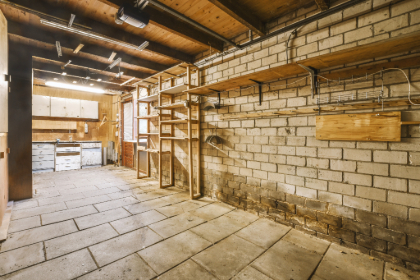Disaster Cleanup & Restoration
24/7/365 Emergency Service
Palm Desert Office: (760) 320-2128
Servicing Riverside County, CA

Seepage occurs when water filters into a property, which can lead to water damage, mold growth, and more. If this is happening in your home, this post by Daniel's DKI in Riverside County, CA, will teach you what you need to know about treating seepage.

Nobody wants issues on their property. Moreover, nobody wants to deal with issues on their property. Nonetheless, issues will arise, and you need to take action to avoid even bigger issues later on. On this occasion, let’s dive into seepage. Seepage is a common problem that plagues many properties. Left unchecked, seepage can lead to structural damage, mold growth, and reduced property value.
In order to help you tackle the problem, here’s everything you need to know about treating seepage in your property.
Are you wondering how to treat seepage? Call Daniel's DKI in Riverside County, CA at (760) 320-2128 for expert assistance in restoring your property.
How to Treat Seepage in Your Home
What Is Seepage?
Seepage occurs when water infiltrates through the walls, floors, or foundation of a property. Unlike visible leaks, seepage often manifests subtly, causing damp patches, peeling paint, or a musty smell over time.
Seepage can result in severe water damage to your property, ruined belongings, mold growth, and more.
Common Causes of Seepage
There are a couple of things that can lead to seepage, for example:
- Poor Drainage Systems: Blocked or inadequate drainage can cause water to accumulate around the foundation.
- Cracks in Walls or Foundation: Structural cracks allow water to penetrate your property.
- High Groundwater Levels: Properties in areas with high water tables are more susceptible to seepage.
- Inadequate Waterproofing: Older properties or those with compromised waterproofing layers are prone to seepage.
- Faulty Plumbing: Leaking pipes or fittings can contribute to water infiltration.
Signs of Seepage in Your Property
Early detection of seepage can save you from costly repairs, which is why you should keep an eye out for:
- Damp walls or floors
- Discoloration or stains on walls and ceilings
- Peeling paint or wallpaper
- Mold or mildew growth
- A persistent musty odor
Call Daniel's DKI in Riverside County, CA at (760) 320-2128 if you need a free estimate on professional property restoration services.
Steps to Treat Seepage
Here’s a general guide on how to treat seepage. Keep in mind that you should evaluate the situation first and decide if you’re equipped to handle it on your own or call a professional team.
1. Identify the Source of the Seepage
Before starting treatment, determine where the water is coming from:
- Inspect visible cracks and joints in walls or floors.
- Check drainage systems for blockages.
- Test plumbing systems for leaks.
Consider getting professional assistance from a contractor or waterproofing expert.
2. Repair Cracks and Weak Points
Cracks in the walls or foundation are common entry points for water.
- Small Cracks: Seal them using epoxy or polyurethane sealants. These materials are effective in creating a waterproof barrier.
- Larger Cracks: For significant structural cracks, you may need professional foundation repair, such as underpinning or grouting.
3. Improve Drainage Systems
Ensure that your property has an effective drainage system to divert water away from the foundation.
- Install or clean gutters and downspouts to direct rainwater away.
- Add a French drain or sump pump if groundwater levels are high.
- Grade the soil around the property to slope away from the foundation.
4. Waterproof Your Property
Waterproofing is a critical step in preventing and treating seepage:
- Exterior Waterproofing: Apply waterproof membranes to the outer walls and foundation. This requires excavation but offers long-term protection.
- Interior Waterproofing: Use waterproof coatings or paints on interior walls to prevent water from penetrating.
- Basement Waterproofing: Install interior drainage systems or vapor barriers to keep basements dry.
5. Address Plumbing Issues
Fix any leaks in the plumbing system that may contribute to dampness. Replace old pipes or fittings and ensure all joints are secure.
6. Manage Humidity and Ventilation
Seepage often leads to increased humidity, which can exacerbate mold growth.
- Use a dehumidifier to control moisture levels indoors.
- Improve ventilation by opening windows or installing exhaust fans in damp areas like basements or bathrooms.
Preventing Future Seepage
After treating the current seepage, take steps to prevent it from recurring:
- Regular Maintenance: Inspect your property periodically for signs of seepage, especially during and after heavy rains.
- Upgrade Waterproofing: Consider investing in modern waterproofing solutions if your property is older or has a history of seepage.
- Landscaping Adjustments: Avoid planting trees or shrubs with invasive roots near your foundation.
- Monitor Groundwater Levels: If you live in an area with fluctuating groundwater levels, a sump pump can provide added protection.
When to Call a Professional
While minor seepage issues can often be addressed with DIY methods, more severe cases require professional intervention. Call a waterproofing expert or structural engineer if:
- You notice extensive cracking or structural damage.
- Mold and mildew problems persist despite treatment.
- Seepage occurs repeatedly despite repairs.




